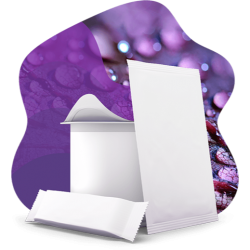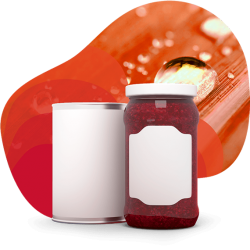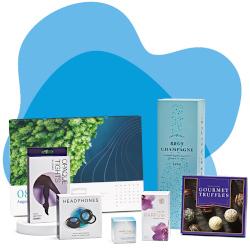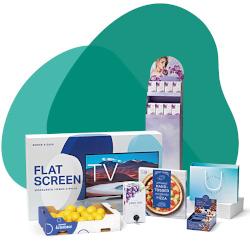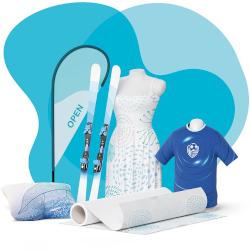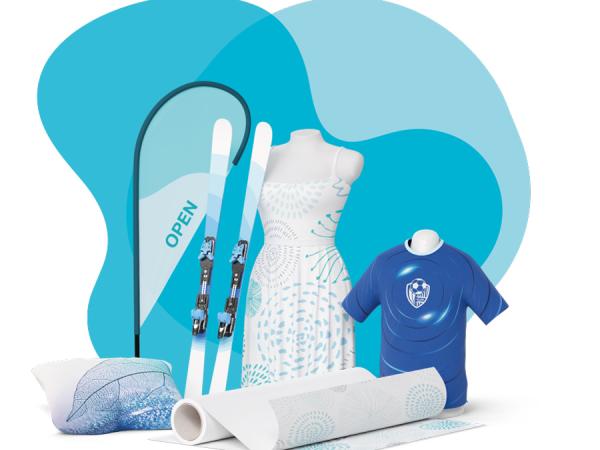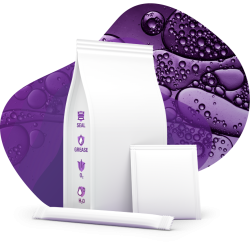
Italian Lifestyle to go
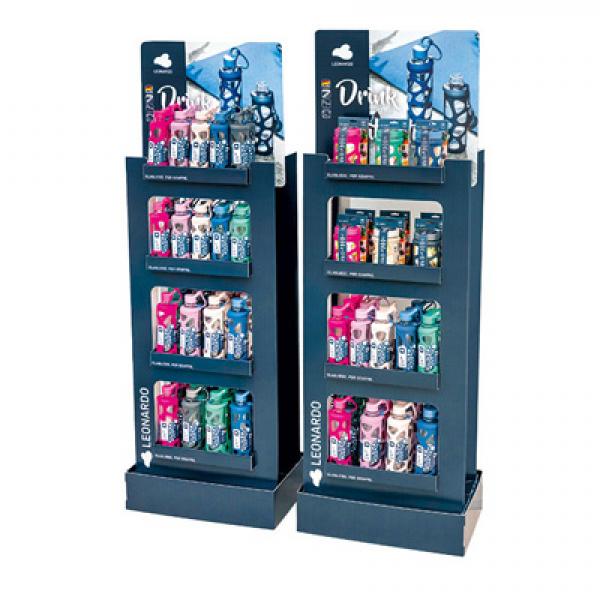
BRANDS & CAMPAIGNS Knappe and Lehbrink Promotion stages relaunch of In Giro by Leonardo
Italian Lifestyle to go - like all Leonardo glass products, In Giro To-go drinking bottles and food containers are an expression of Italian lifestyle. To mark the relaunch of the collection, Knappe und Lehbrink Promotion transposes this lifestyle to the POS – with lightness and strength.
Drink. Glasliebe. Per sempre: The In Giro To-go drinking bottles and food containers are designed to grab the attention of retail shoppers across the globe – making a clear statement that is instantly understood by all. Photo: glaskoch
How are the lifestyle products presented at the POS?
And what special features of the brand needed to be taken into account during the relaunch campaign? The brand name conjures up associations with Leonardo da Vinci and promises artistic, Italian design – and Mediterranean joie de vivre. Leonardo’s trademark – a cloud – also promises a feeling of lightness. The rather substantial In Giro bottles are produced in Germany and assembled in Bad Driburg-Herste in North Rhine-Westphalia.
Founded in 1859, the name of the family-owned company glaskoch remains rather in the background, whereas the lifestyle brand Leonardo is known internationally. Leonardo is featured at around 8,000 points of sale in 88 countries. About 800 new products are launched every year under the well-known label, which was introduced in 1972. From water glasses to wine goblets to decorative jellyfish, Leonardo’s range is extensive and extremely diverse.
But how do you keep a brand that is almost 50 years old young enough to encourage consumers in the trade to keep coming back for more? Taking a look behind the scenes of In Giro’s current relaunch campaign, display spoke to Torben Becker, Head of Trade Marketing, glaskoch B. Koch jr. Koch jr. GmbH & Co. KG and Stefanie John, Key Account Manager, Knappe and Lehbrink Promotion GmbH.
Knappe and Lehbrink Promotion GmbH, founded in 1996 and headquartered in Bünde, North Rhine-Westphalia, is one of the leading manufacturers in the display industry. In addition to displays and packaging made of solid board and corrugated board, the portfolio includes promotional flags, banners and POS solutions made of a variety of materials such as metal or plastic. Simone Knappe and Oliver Lehbrink have been managing the FSC and DIN EN ISO 9001 certified company with around 100 employees since 2013.
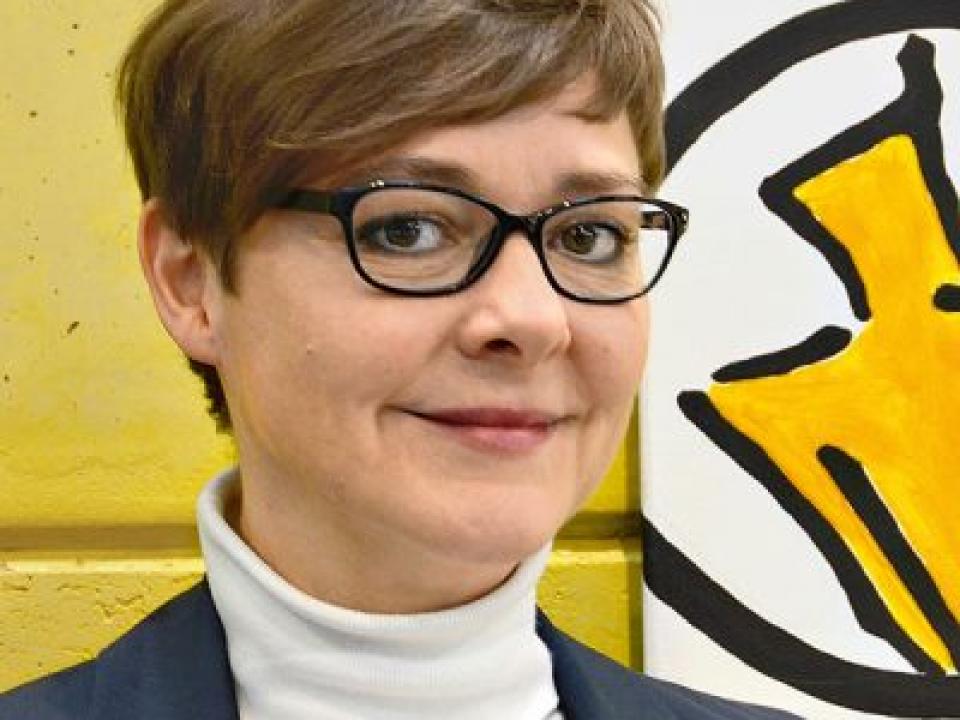
‘The special design of the Leonardo In Giro – display makes for high stability and optimal, cost-efficient handling.’
Stefanie John, Key Account Manager, Knappe and Lehbrink Promotion GmbH Photo: Knappe and Lehbrink Promotion
DISPLAY: What is the POS campaign for the In Giro collection aiming to achieve?
TORBEN BECKER: The relaunch of the In Giro bottle was what prompted the current promotion campaign in the retail trade. Now optimised for carbonated beverages, the new bottle is 100 per cent leak-proof. The In Giro bottle is also available in exciting new colours. There were two objectives: to promote the relaunch and simultaneously boost sales. The displays express the sustainability of our ‘Made in Germany’ products and helps to create a positive impact on the image of our company.
DISPLAY: Mr Becker, what are the most important characteristics and emotions you want the In Giro displays to communicate?
TORBEN BECKER: The brand’s core values are joie de vivre, quality and inspiration.
DISPLAY: How did you use the displays to transport these brand values to the POS, Ms John?
STEFANIE JOHN: First of all, we designed the displays and communicated the USPs according to glaskoch’s CI guidelines. It was also important to convey a high value in terms of printing. We used Fusion Topliner to laminate the corrugated board. Its coated, bright white surface produces the best offset printing quality. By adding a high proportion of virgin fibre board to the liner, the risk of edge breakage is also greatly reduced. In view of the dark blue, largely full-surface printing, this is essential for the high-quality appearance of the display.

DISPLAY: Did the displays also come with special features?
STEFANIE JOHN: Besides the topper that can be inserted in the centre, a pallet banderole creates a greater sense of value.
DISPLAY: Were there any special requirements to be met for the construction of the display in addition to the high demands on the design?
TORBEN BECKER: Our products are made of glass, so they are quite heavy.
The displays therefore have to be able to hold a lot of weight. Another factor to consider was the large number of products. We developed a quarter-pallet display to showcase the 760 millilitre food containers and the two sizes of to-go bottles - 0.5 and 0.75 litres – as well as the six colours basalto, pink, verde, azzuro, rosé and viola. This display can be used for two different set-ups: with 79 bottles or with a mix of 41 bottles and 18 food containers.
STEFANIE JOHN: This meant we had to come up with a particularly stable structural design that would meet these requirements. To maximise the load-bearing capacity of the displays, we opted for a combination of EB and E flutes. The special design of the Leonardo In Giro display makes for high stability and optimal, cost-efficient handling.
DISPLAY: That means you also took the retail sector into consideration when designing the display?
STEFANIE JOHN: Yes, the displays are quick and easy to put together. They are assembled in Bad Driburg by glaskoch logistics, stocked, covered with a shipping hood and dispatched by a forwarding agent. The retailer only needs to remove the hood and put the display where it is supposed to go. The quarter-pallet displays are used worldwide and not every country is connected to the Chep system, so the system was designed so that it can be placed on a Chep pallet as well as on a wooden pallet. The different languages were managed through the layout.
DISPLAY: Yes, the headline ‘Drink’ and the slogan ‘Glasliebe. Per sempre.’ are more or less universally understood. How many In Giro displays have been provided to the retail trade worldwide?
TORBEN BECKER: We have a total of 1,000 pieces in our order system. They can be requested all year round for the furnishing trade, department stores, food retailers, specialist retailers and markets as well as the DIY sector.
DISPLAY: What advantages do the displays offer the consumer in retail, apart from the attractive, high-class appearance and an easily understandable brand message and product statement?
STEFANIE JOHN: The display has been designed in such a way that the goods can be accessed from both sides. This makes the products extremely visible.
DISPLAY: On balance, how much time did the planning and realisation of the POS campaign take?
TORBEN BECKER: Glaskoch has been working with Knappe and Lehbrink Promotion for several years. The partnership is built on trust and mutual success. This made it easy to plan and realise the campaign in a very short time. We needed a total of 17 weeks, but only five weeks of that were spent on manufacturing the displays.
DISPLAY: Thank you for the interview!
Italian lightness for serious glasses:
Knappe and Lehbrink Promotion designed lifestyle displays for the In Giro collection by Leonardo. Photo: glaskoch

‘There were two objectives: to promote the relaunch and simultaneously boost sales.’
Torben Becker, Head of Trade Marketing glaskoch B. Koch jr. GmbH & Co. KG Photo: glaskoch
glaskoch
glaskoch is a family business that was founded in 1859 and is now one of Europe’s leading glass suppliers. The company is now run by the fifth generation of the family, Oliver and Bianca Kleine, and has a workforce of 280. Leonardo has been bringing Italian lifestyle into the home since 1972. The brand features an image depicting a cloud and encompasses not only drinking glasses but also decorative items, furniture and lifestyle products as well as collections of jewellery. glaskoch also has a second strong brand alongside Leonardo, called Montana. According to the brand manufacturer, both brands reach 83 per cent of the German population.
Photo: glaskoch
